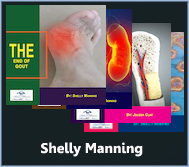 Basically, the advice they give every patient for every disease…I worried constantly about how bad my fatty liver might become. How it might slowly progress into something far more serious. Because whatever caused my fatty liver was only going to make it worse if I didn’t do something about it.Given the lack of help from the medical profession, the question is, do what about it? And the answer? It’s here. Take a look in the short video
Basically, the advice they give every patient for every disease…I worried constantly about how bad my fatty liver might become. How it might slowly progress into something far more serious. Because whatever caused my fatty liver was only going to make it worse if I didn’t do something about it.Given the lack of help from the medical profession, the question is, do what about it? And the answer? It’s here. Take a look in the short video
Click to see more detail on Video
Fatty Liver age
Fatty liver disease can affect individuals of any age, including children, adolescents, adults, and older adults. However, certain risk factors may increase the likelihood of developing fatty liver disease at different stages of life.
In children and adolescents:
- Obesity: Children and adolescents who are overweight or obese are at increased risk of developing non-alcoholic fatty liver disease (NAFLD). The prevalence of NAFLD in children and adolescents has been rising in parallel with the obesity epidemic.
- Unhealthy diet: Poor dietary habits, such as consuming excessive amounts of sugary beverages, processed foods, and high-fat foods, can contribute to the development of fatty liver disease in young people.
- Sedentary lifestyle: Lack of physical activity and sedentary behavior can exacerbate metabolic imbalances and increase the risk of fatty liver disease in children and adolescents.
In adults:
- Obesity: Excess body weight, particularly abdominal obesity, is a major risk factor for non-alcoholic fatty liver disease (NAFLD) in adults. Metabolic syndrome, which is often associated with obesity, is also closely linked to fatty liver disease.
- Type 2 diabetes: Adults with type 2 diabetes are at increased risk of developing NAFLD due to insulin resistance and metabolic disturbances.
- Unhealthy lifestyle habits: Poor dietary habits, excessive alcohol consumption, smoking, and lack of physical activity can contribute to the development and progression of fatty liver disease in adults.
In older adults:
- Age-related changes: Aging is associated with changes in metabolism, body composition, and liver function, which may increase the risk of fatty liver disease in older adults.
- Metabolic changes: Older adults may be more susceptible to metabolic disorders such as insulin resistance and dyslipidemia, which are risk factors for fatty liver disease.
- Medications: Older adults are more likely to take multiple medications, some of which may have hepatotoxic effects and contribute to liver injury.
- Chronic medical conditions: Certain chronic medical conditions common in older adults, such as hypertension, cardiovascular disease, and chronic kidney disease, may increase the risk of fatty liver disease.
It’s important to note that fatty liver disease can occur at any age and may have different underlying causes and risk factors in different populations. Early detection, lifestyle modifications, and medical management are key to preventing and managing fatty liver disease at any stage of life. If you’re concerned about fatty liver disease or its risk factors, consult with a healthcare provider for proper evaluation, diagnosis, and management.
Can a 20 year old have fatty liver?
Yes, it’s possible for a 20-year-old to have fatty liver disease. While fatty liver disease was traditionally associated with older individuals, it’s increasingly being diagnosed in younger populations, including adolescents and young adults. This trend is largely attributed to the rising prevalence of obesity and unhealthy lifestyle habits, such as poor diet and sedentary behavior, among younger age groups.
Several factors may contribute to the development of fatty liver disease in a 20-year-old individual:
- Obesity: Excess body weight, particularly abdominal obesity, is a significant risk factor for fatty liver disease. Young adults who are overweight or obese are at increased risk of developing non-alcoholic fatty liver disease (NAFLD).
- Unhealthy diet: Poor dietary habits, such as excessive consumption of sugary beverages, processed foods, high-fat foods, and fast food, can contribute to the accumulation of fat in the liver.
- Sedentary lifestyle: Lack of physical activity and sedentary behavior can exacerbate metabolic imbalances and increase the risk of fatty liver disease in young adults.
- Alcohol consumption: Excessive alcohol consumption can lead to alcoholic fatty liver disease (AFLD) in individuals of any age, including young adults. Binge drinking and heavy alcohol use are particularly concerning.
- Genetic factors: Some individuals may have a genetic predisposition to fatty liver disease, which can increase their susceptibility to developing the condition at a younger age.
It’s important for young adults to be aware of the risk factors for fatty liver disease and to adopt healthy lifestyle habits to reduce their risk. This includes maintaining a balanced diet, engaging in regular physical activity, limiting alcohol consumption, avoiding smoking, and managing stress. If you’re concerned about fatty liver disease or its risk factors, consider discussing your concerns with a healthcare provider for proper evaluation, diagnosis, and management. Early detection and intervention can help prevent disease progression and reduce the risk of complications.
Can you have fatty liver at 30?
Yes, it’s possible for a person to have fatty liver disease at the age of 30. Fatty liver disease can affect individuals of any age, including young adults. While it was once more commonly associated with older individuals, the prevalence of fatty liver disease, particularly non-alcoholic fatty liver disease (NAFLD), has been increasing in younger populations in recent years.
Several factors may contribute to the development of fatty liver disease in a 30-year-old individual:
- Obesity: Excess body weight, particularly abdominal obesity, is a significant risk factor for fatty liver disease. Young adults who are overweight or obese are at increased risk of developing NAFLD.
- Unhealthy diet: Poor dietary habits, such as excessive consumption of sugary beverages, processed foods, high-fat foods, and fast food, can contribute to the accumulation of fat in the liver.
- Sedentary lifestyle: Lack of physical activity and sedentary behavior can exacerbate metabolic imbalances and increase the risk of fatty liver disease in young adults.
- Alcohol consumption: Excessive alcohol consumption can lead to alcoholic fatty liver disease (AFLD) in individuals of any age, including young adults. Binge drinking and heavy alcohol use are particularly concerning.
- Metabolic factors: Metabolic syndrome, insulin resistance, type 2 diabetes, and dyslipidemia are metabolic conditions that can increase the risk of fatty liver disease, even at a younger age.
- Genetic factors: Some individuals may have a genetic predisposition to fatty liver disease, which can increase their susceptibility to developing the condition at a younger age.
It’s important for individuals, including those in their 30s, to be aware of the risk factors for fatty liver disease and to adopt healthy lifestyle habits to reduce their risk. This includes maintaining a balanced diet, engaging in regular physical activity, limiting alcohol consumption, avoiding smoking, and managing stress. If you’re concerned about fatty liver disease or its risk factors, consider discussing your concerns with a healthcare provider for proper evaluation, diagnosis, and management. Early detection and intervention can help prevent disease progression and reduce the risk of complications.
Is fatty liver common with age?
Yes, fatty liver disease can become more common with age, although it can affect individuals of all ages. As people age, various factors can contribute to an increased risk of developing fatty liver disease or experiencing progression of existing liver fat accumulation. Some of these factors include:
- Changes in metabolism: Metabolic changes associated with aging, such as alterations in lipid metabolism and insulin resistance, can contribute to the development of fatty liver disease.
- Weight gain: Many individuals tend to gain weight as they age, especially around the abdominal area. Excess body weight, particularly abdominal obesity, is a significant risk factor for fatty liver disease.
- Sedentary lifestyle: Physical activity tends to decrease with age, which can lead to a decline in metabolic rate and an increased risk of fat accumulation in the liver.
- Alcohol consumption: Chronic and excessive alcohol consumption over time can contribute to the development of alcoholic fatty liver disease (AFLD), which may become more common with age.
- Prevalence of metabolic conditions: Age-related conditions such as type 2 diabetes, dyslipidemia, hypertension, and metabolic syndrome can increase the risk of fatty liver disease.
- Medication use: Older adults may be more likely to take medications that can affect liver health, such as certain cholesterol-lowering drugs, corticosteroids, and some psychiatric medications.
While fatty liver disease can affect individuals of all ages, its prevalence tends to increase with advancing age. However, it’s important to note that fatty liver disease is not an inevitable consequence of aging, and lifestyle factors play a significant role in its development and progression. Adopting healthy lifestyle habits, such as maintaining a balanced diet, engaging in regular physical activity, limiting alcohol consumption, and managing chronic conditions, can help reduce the risk of fatty liver disease and promote liver health at any age. Regular medical check-ups and screenings can also help detect fatty liver disease early and facilitate appropriate management and treatment.
Is it normal to have a fatty liver?
While it’s not uncommon for people to have some degree of fat in their liver, having a significant amount of fat accumulation in the liver, known as fatty liver disease, is not considered normal. Fatty liver disease is a condition characterized by the buildup of excess fat in liver cells. There are two main types of fatty liver disease:
- Non-alcoholic fatty liver disease (NAFLD): This type of fatty liver disease occurs in individuals who consume little to no alcohol. NAFLD is often associated with obesity, insulin resistance, type 2 diabetes, metabolic syndrome, and other metabolic risk factors.
- Alcoholic fatty liver disease (AFLD): This type of fatty liver disease occurs in individuals who consume alcohol excessively. Chronic and excessive alcohol consumption can lead to fat accumulation in the liver and inflammation, which can progress to more severe liver conditions such as alcoholic hepatitis and cirrhosis.
Fatty liver disease is considered a spectrum of conditions, ranging from simple steatosis (fat accumulation) to non-alcoholic steatohepatitis (NASH), which involves liver inflammation and damage. In some cases, fatty liver disease can progress to more severe liver conditions, including fibrosis, cirrhosis, and liver cancer.
While fatty liver disease is increasingly common, particularly in Western countries, it is not a normal or benign condition. It can lead to serious health complications, including liver dysfunction, liver failure, and an increased risk of cardiovascular disease. Therefore, it’s important to address risk factors for fatty liver disease, such as obesity, unhealthy diet, sedentary lifestyle, excessive alcohol consumption, and metabolic conditions, and to seek medical evaluation and management if fatty liver disease is suspected or diagnosed. Early detection and intervention can help prevent disease progression and reduce the risk of complications.
 Basically, the advice they give every patient for every disease…I worried constantly about how bad my fatty liver might become. How it might slowly progress into something far more serious. Because whatever caused my fatty liver was only going to make it worse if I didn’t do something about it.Given the lack of help from the medical profession, the question is, do what about it? And the answer? It’s here. Take a look in the short video
Basically, the advice they give every patient for every disease…I worried constantly about how bad my fatty liver might become. How it might slowly progress into something far more serious. Because whatever caused my fatty liver was only going to make it worse if I didn’t do something about it.Given the lack of help from the medical profession, the question is, do what about it? And the answer? It’s here. Take a look in the short video
Click to see more detail on Video





